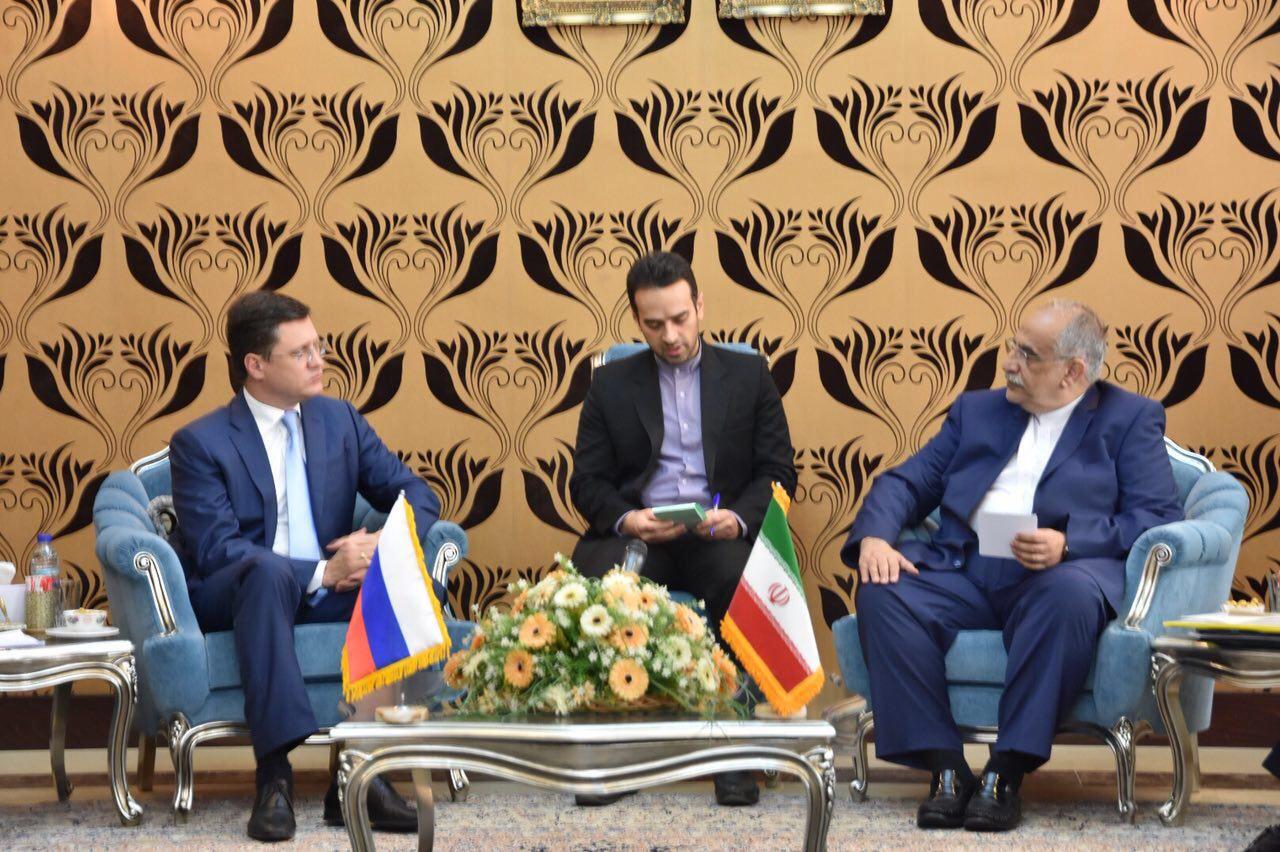The removal of banking hurdles and expansion of financial ties have considerably impacted the volume of transactions between Iran and Russia.
This was stated by Iran’s Minister of Economic and Finance Affairs Masoud Karbasian in a meeting with Russian Minister of Energy Alexander Valentinovich Novak in Tehran on Wednesday, IBENA reported.
“Fortunately, expansion of Iran-Russia relations has gone smoothly, as the volume of trade between the two countries witnessed a 70% growth last year,” Karbasian said.
He met with the Russian official before the arrival of Russian President Vladimir Putin in Tehran the same day.
Putin is visiting Tehran to attend the second tripartite meeting of Iran, Russia and Azerbaijan, which is planned to focus on regional conflicts, the International North-South Transport Corridor project aimed at facilitating trilateral trade, the Syrian crisis and the 2015 Iran nuclear deal.
Karbasian announced during the meeting that negotiations for Iran’s cooperation in the Eurasian Economic Union, an integrated single market of 183 million people with a gross domestic product of over $4 trillion, are in final stages.
“Establishing new banking relations and resolving customs issues to create an easy route, especially for Iranian traders, have paved the way for boosting economic ties between the two countries,” he added.
The Russian minister also hailed the significant growth in trade between the two countries.
“Following the orders of the two countries’ presidents to enhance economic cooperation in various sectors, after a comprehensive and detailed discussion, we assessed different aspects of a roadmap to bolster economic ties between Iran and Russia,” Novak added.
Remaining Roadblocks
This is while the head of Iran-Russia Chamber of Commerce believes that relations with Russia are very important, although the volume of Iran’s exports to Russia remains low.
“Last [Iranian] year [ended March 20, 2017], Iran exported $400 million worth of commodities to Russia while the value of imports exceeded $1.5 billion, meaning that the share of Iran’s exports to Russia is no more than 20% of bilateral trade, which is not acceptable,” Asadollah Asgaroladi added.
He noted that Russia is the biggest food consumer in Eastern Europe and the country imports from all over the world, but Iran’s position in this market is not good and stands weaker than all other neighboring countries.
“Banking issues, financial hurdles, transportation and difficulties of acquiring business visas are our biggest problems in trade with Russia and I have mentioned them several times to Russian ministers, but nothing has been done yet,” Asgaroladi was quoted as saying by the official news website of Iran Chamber of Commerce, Industries, Mines and Agriculture.
According to Asgaroladi, Iranian traders cannot transfer money to Russia through normal banking channels and the exchange rate of rial against ruble is not stable, therefore both countries’ central banks need to sign an agreement.
He believes that transportation and getting business visas are the biggest problems of Iranian traders working with Russia.
“We believe that Russia should issue one-year, multi-purpose visas for Iranian traders and entrepreneurs, but they have done nothing to resolve this matter,” he added.
The head of Iran-Russia Chamber of Commerce also referred to the meeting between Russian President Vladimir Putin and Iranian officials.
“It was planned that a representative of the private sector also attend the meeting, but the head of ICCIMA has not been invited yet,” Asgaroladi said, criticizing the government for not fulfilling its promise of giving importance to the private sector.
The first such trilateral meeting was held in August 2016 in Baku where Putin and his Iranian and Azeri counterparts, Hassan Rouhani and Ilham Aliyev respectively, discussed joint economic plans and issues of mutual and regional importance.


